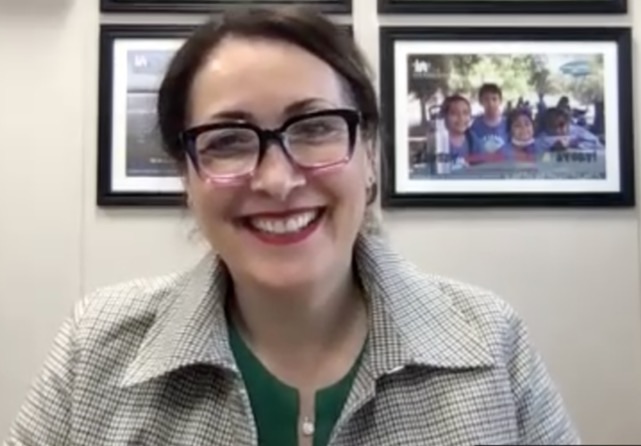This story originally appeared at Newsmakers with Jerry Roberts.
Just two months ago, sharp declines in Covid cases and the success of vaccines against the virus at last augured a normal school year for students, teachers and parents, after the pandemic had thrown the prior two into disarray.
So much for augury.
The sudden widespread transmission of the Delta variant of the virus, coupled with disappointingly low vaccination levels, and a whole new set of orders, regulations and “guidance” from Sacramento, together have reintroduced uncertainty as the chief operating principle for local school districts, here and across the nation.
“We are in a pandemic. It is completely unpredictable — but it doesn’t mean we can’t plan for it,” Dr. Hilda Maldonado, superintendent of Santa Barbara Unified School District told Newsmakers in a back-to-school interview a few days ago..
“We’re not going in blind,” she added. “We have contingency plans in place.”
Amid community conflict, questions and confusion over mandates for masks and vaccines for teachers and students, Maldonado said she is absolutely sure about one thing: Santa Barbara Unified schools will open on Tuesday – and then stay open.
Last year, K-12 classes were held remotely for almost the entire year in Santa Barbara, but now the American College of Pediatrics, the Centers for Disease Control and other authorities are urging that schools across the country reopen as a priority.
“We are 150 per cent committed to keeping our kids in school and keeping our schools open,” the superintendent said. “That is our main mission, because that is why we exist.”
“I really believe that we have learned to be more agile and more flexible” over the past year, she added. “And we’ll be doing that as these things happen and change.”
In the interview, Maldonado said that 89 percent of the district’s teachers have presented verification of vaccination, as of last Friday, which is not only an encouraging signal of their enthusiasm for returning to classrooms but also a reflection of how teachers unions nationwide have dropped their previous resistance to such mandates.
“I’m very proud of our teachers,” she said.
With children 12 years and older eligible for the vaccine, it is not yet known how many students in that cohort have received it, but Maldonado said the district is working with the Public Health Department to bring mobile clinics to the high schools and junior highs for students whose families want them to get a shot.
To date, she stated, very few students — only about 100 out of more than 12,000 in the district — have opted into the Alternative Learning Program established for those who do not wish to return to classrooms, or who will not comply with the mandate to wear a mask indoors at all times.
“We know that parents have different choices for their children when it comes to whether or not they want them to wear a mask or whether or not they want them vaccinated or whether or not they require certain accommodations,” she said. “Now that we’ve had legislation from the state (requiring) the Independent Study Program as the program of choice, if you don’t want to do the in-person school, then that’s what the parents will be offered.”
At a time when the Delta variant is raging in areas with low vaccination rates, and pediatric hospitalizations are soaring, schools in half-a-dozen states, including Georgia, Mississippi and Texas, already have been forced to temporarily close. The superintendent said she and the district’s executive cabinet have engaged in detailed risk assessment planning for how to manage possible outbreaks in Santa Barbara schools.
“As far as what we have done, I have to say that I have an extremely capable cabinet, along with principals, and they have been working out scenarios: What if it’s 10 kids in a classroom in elementary versus junior high versus high school? What will that look like? What if it’s the teacher? What if it’s the whole class?” she said
“So we’re now working on models of responses that we will have in place,” she added. “They started off with, I don’t know, 10 different scenarios, and then we just kind of worked through it, worked through it.”
In our 30-minute conversation, Superintendent Maldonado also discussed the district’s plan to have all students self-test with nasal swabs; the “decision tree” established to comply with the state’s latest raft of regulations; specific health and safety protocols set up in every school to help prevent the spread of the virus; and what is known so far about “learning loss” because of last year’s remote classes.
She also described several new programs, some financed by federal pandemic funds, to improve language literacy at the elementary level, to track and guide student achievement at all levels and to establish a “whole child health initiative” to provide eye, ear and dental checkups for students who need them.
“There’s a lot of systemic changes that we’re making,” Maldonado said. “We’re not going to just try to study the problem — we’re going to attack it from the get-go.”
Check out our conversation with Dr. Hilda Maldonado via YouTube below or by clicking through this link. The podcast version is here.
Support the Santa Barbara Independent through a long-term or a single contribution.




